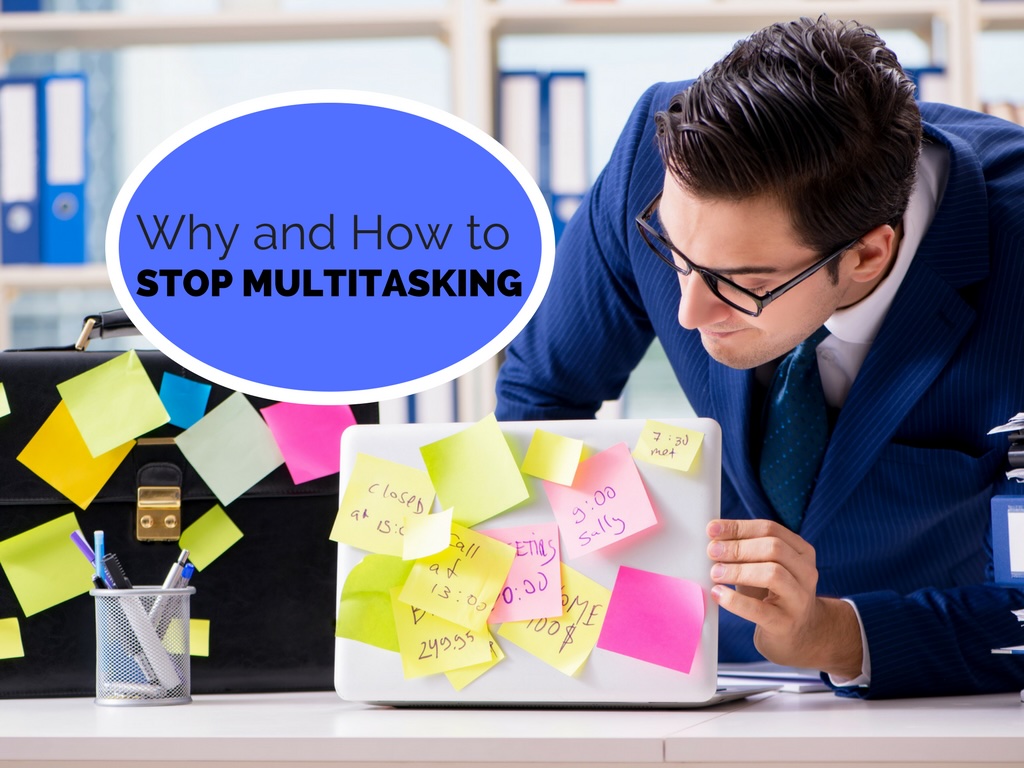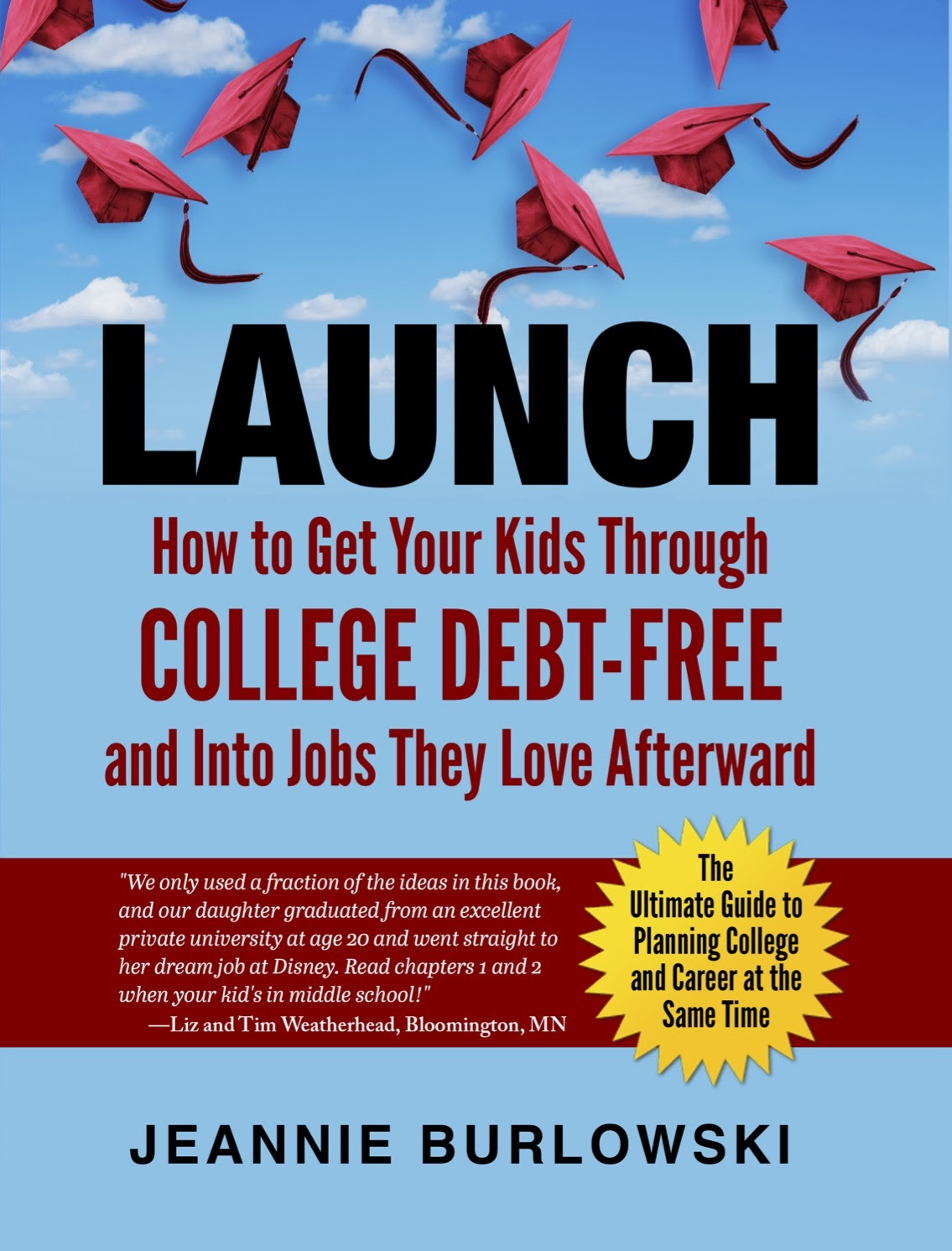On the surface, it seems as though multitasking would make a great productivity tool. After all, if you can book a plane ticket and quickly shoot off an email while you’re on a phone meeting at work, why not? Haven’t you just masterfully killed two birds with one stone? Shouldn’t you be congratulated for being a brilliant time manager?
Research says no.

Multitasking will drop your IQ faster than smoking pot.
One study showed that workers distracted by incoming email and text messages saw a whopping 10-point drop in their IQs.
What’s the effect of a 10-point drop in IQ? It’s the same as losing an entire night’s sleep, and more than twice the effect of smoking marijuana.
Multitasking slashes your productivity by as much as 40%.
We delude and fool ourselves into believing that we’re getting more done by multitasking. In reality, a day of multitasking results in less accomplishment, less productivity, and at the end of the day, something perhaps worse than mere low productivity.
Multitasking skyrockets feelings of stress and anxiety, eating away at the enjoyment of free time.
The stress that multitasking causes at work doesn’t simply go away at the end of the workday.
Instead, stress follows you home, where it can interfere with your most important relationships and eat away at your ability to relax. At bedtime, a head and heart still roiling with stress and anxiety can interfere with sleep, and wake you up in the morning with a feeling of fear that drives you to try to multitask more.
Why is this? Why is multitasking so detrimental to productivity?
Executive coach Peter Bregman says, “We don’t actually multitask. We switch-task, rapidly shifting from one thing to another, interrupting ourselves unproductively, and losing time in the process.” [Emphasis mine].
According to professor of psychology and behavioral neuroscience Daniel J. Levitin, author of The Organized Mind: Thinking Straight in the Age of Information Overload, “We’re not actually keeping a lot of balls in the air like an expert juggler; we’re more like a bad amateur plate spinner, frantically switching from one task to another, ignoring the one that is not right in front of us but worried it will come crashing down any minute.”
That’s stressful. This self-imposed stress raises levels of the stress hormone cortisol, which is associated with weight gain, depression, and poor wound healing. Increased cortisol can also predispose us to be more aggressive and impulsive, and it can raise the risk of cardiovascular disease.
The danger for students ages 12–26? Multitasking directly interferes with learning.
I’ve written before about how your child’s habit of texting, emailing, and using social media during college classes could cost your family $28,000. You can find that article here.
But multitasking hurts outside-of-class work too.
According to Stanford researcher Clifford Nass, “Young people who engage in heavy media multitasking struggle significantly with concentration.” They find it more difficult to concentrate on single intellectual tasks, such as reading a textbook.”
Professor Russell Poldrack, psychologist at the University of California, reports on the specific dangers of “trying to learn while doing something else.” (For example, doing homework while watching TV or surfing social media.) “When you try to learn in a distracted environment,” Poldrack says, “you send information to an inappropriate part of the brain.” Using brain scans, Poldrack has found that, “if we multitask while studying, the information goes into the striatum, a region of the brain involved in learning new skills, from where it is difficult to retrieve facts and ideas. [Emphasis mine.] If we are not distracted, it heads to the hippocampus, a region involved in storing and recalling information.”
It’s important that students get the message about the dangers of multitasking early on.
How to free yourself from the destructive habit of multitasking:
1. Set aside a period of time where you refuse to multitask. It may be an hour, a day, or an entire week.
2. Identify people who think they’re entitled to get immediate responses from you. Let these people know that you’re going to be setting aside periods of time for “deep work,” and so will no longer be available to answer their emails, calls, and texts immediately. (Don’t worry, they’ll live.)
3. During your “deep work” time, eliminate incoming notifications on your phone and computer. You might consider changing the settings on your computer so that it never notifies you of any incoming notifications, and then simply put your phone on “do not disturb” and turn it upside down.
4. If you have children, give them a way to break through and get to you in emergencies. My children know that if they call me twice, quickly, they’ll break through the “do not disturb” I’ve set on my iPhone and get straight to me.
5. Make it a practice to do only one thing at a time. Notice how your purposeful focus allows you to get more done, and how it increases your personal satisfaction with life.
6. At the end of your deep work time, note how good you feel. Perhaps you’ll be like executive coach Peter Bregman, who wrote in the Harvard Business Review about how excellent he felt after his one-week break from multitasking. “Being free of multitasking was delightful,” he said. “My stress dropped dramatically. It was a relief to do only one thing at a time. I felt liberated from the strain of keeping so many balls in the air at each moment. It felt reassuring to finish one thing before going to the next.” In addition, Bregman reported that he made real progress on challenging projects, he lost patience for things that wasted his time, he had patience for useful and enjoyable tasks, and “there was no downside.”
7. Consider using an app that can free you from the constant pull to multitask. See the 2-minute video trailer for the Freedom app below. (This is not a commercial endorsement and I get nothing for telling you this; I just think the Freedom app is a great tool.)
I hope that freedom from multitasking will give you time and space to think a little more about the future.
For clear, step-by-step help getting your kids through college debt-free, get my book:
Important—> It’s a reference book, so nobody reads the whole thing cover to cover. Pick out what you need to read in it using the fast-paced, 10-minute video instructions here.
You can see hundreds of reviews of this book on Amazon by going to:
Read just one chapter of LAUNCH every 1–3 months while your child’s in middle school and high school, and you’ll know every viable strategy for debt-free college at exactly the right time to implement it.
And if your child’s already well past middle school? That’s OK; you can run to catch up. But the process of getting your kids through college debt-free goes more smoothly the earlier you start—especially if you’re not planning to save up any money to pay for college.
Let's you and I walk together toward the goal of debt-free college for your kids.
We can accomplish this no matter your current income level—even if your kids never get a single scholarship.
Your first step is getting regularly scheduled, free helpful articles from me—right in your email inbox. Quick, sign up here.
Do you have very specific questions for me about debt-free college and career for your kids?
My TRIBE Members get the most direct access to me—while feeling good that the pennies per day they spend on the TRIBE help me bring debt-free college strategy to families who could never afford to pay for it. Join my TRIBE Membership waiting list here.
Who is Jeannie Burlowski?
Jeannie is a full-time academic strategist, podcast host, and sought-after speaker for students ages 12–26, their parents, and the professionals who serve them. Her writing, speaking, and podcasting help parents set their kids up to graduate college debt-free, ready to jump directly into careers they excel at and love. Her work has been featured in publications such as The Huffington Post, USA Today, Parents Magazine, and US News & World Report, as well as on CBS News.
Jeannie also helps students apply to law, medical, business, and grad school at her website GetIntoMedSchool.com. You can follow her on Bluesky @jburlowski.bsky.social.
No part of this article was written using AI.
This article was updated on August 21st, 2025.


